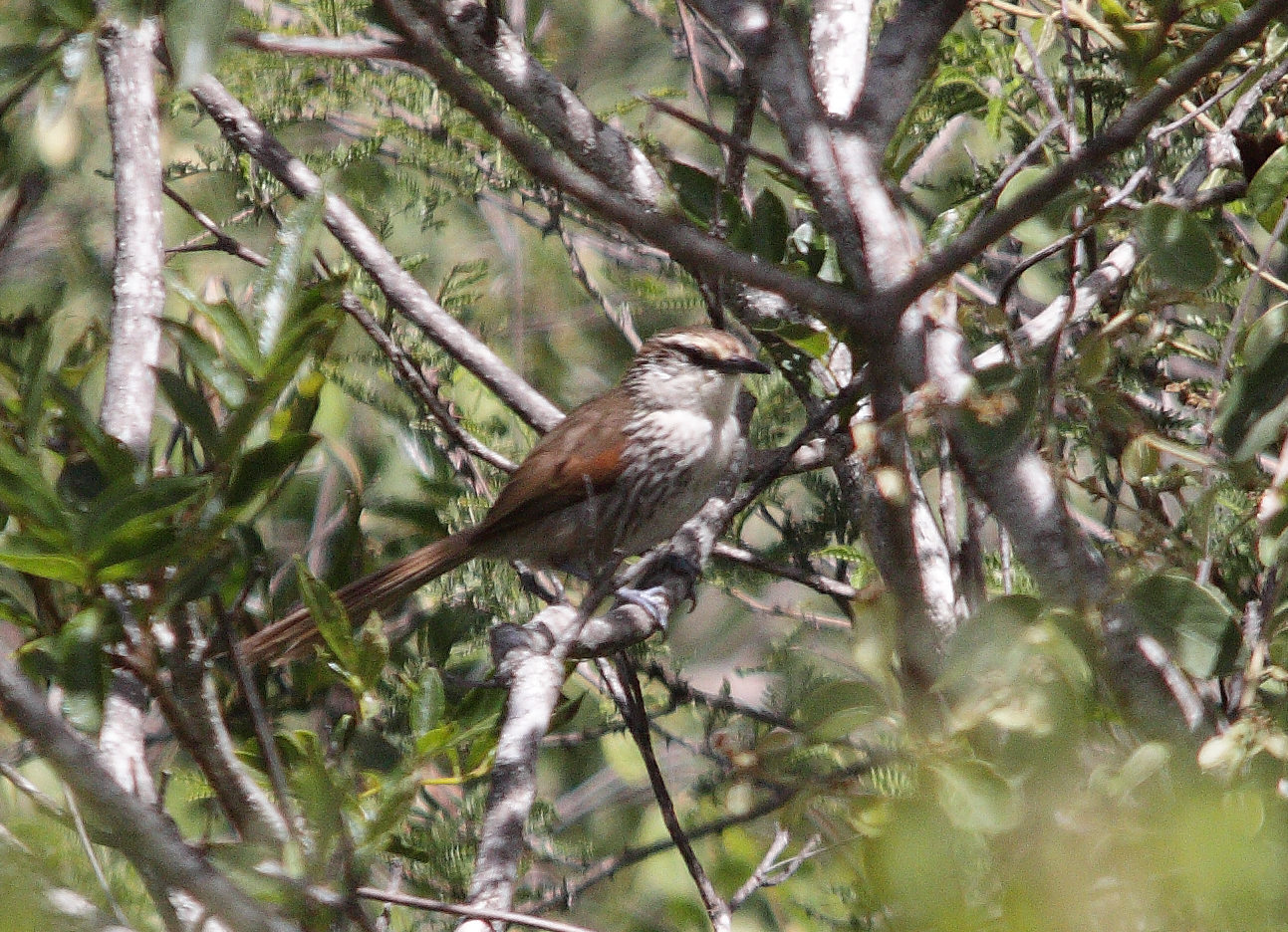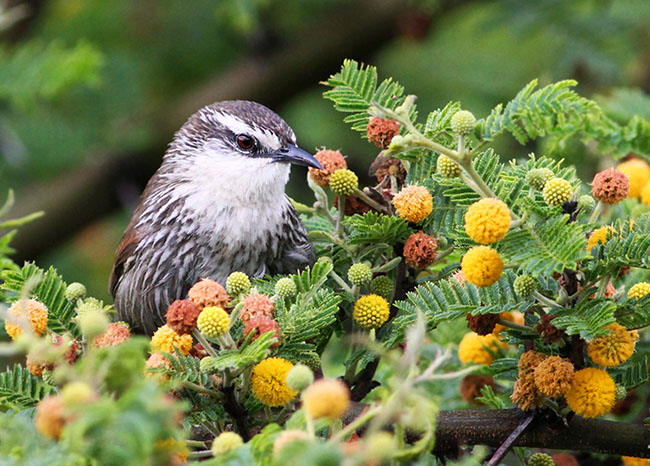
Siptornopsis hypochondriacus
SUBFAMILY
Synallaxeinae
TAXONOMY
Siptornopsis hypochondriacus Salvin, 1895.
OTHER COMMON NAMES
French: Synallaxe а poitrine rayйe; German: Salvinschlьpfer;
Spanish: Canastero Grande.
PHYSICAL CHARACTERISTICS
Body length is about 7.5 in (18.5 cm). Bill is short, slightly
downcurved, and pointed. The body is relatively robust, and
the tail is long and indistinctly forked. The sexes are similar.
The back and tail are colored olive-brown, the wings are olivebrown
with rufous patches, the throat and belly are whitish
streaked with brown on the flanks, the crown of the head is
olive, and there is a white stripe over the eye.
DISTRIBUTION
An endemic, little-known species that only occurs in a small
area, in the Rio Maranon Valley of northern Peru.
HABITAT
Occurs on slopes in humid, dense montane shrubs and forest.
Mostly occurs at elevations of 6,550–9,850 ft (2,000–3,000 m).
BEHAVIOR
Not well known. Occurs as pairs. The song is a loud chatter.
FEEDING ECOLOGY AND DIET
Forages for insects and other small invertebrates.
REPRODUCTIVE BIOLOGY
Constructs a large, bulky, roofed nest of sticks. Both the male
and female incubate the eggs and rear the nestlings.
CONSERVATION STATUS
An endemic species, and listed as Vulnerable because of
its small range and few known populations. Its habitat is
thought to be declining in area because of conversion into
agricultural land-use and other disturbances. This little-known
species should be better-studied, and its critical habitat conserved.
SIGNIFICANCE TO HUMANS
None known.
Other popular Animals
Photo Gallery of - Great spinetail




 Animalia Life
Animalia Life